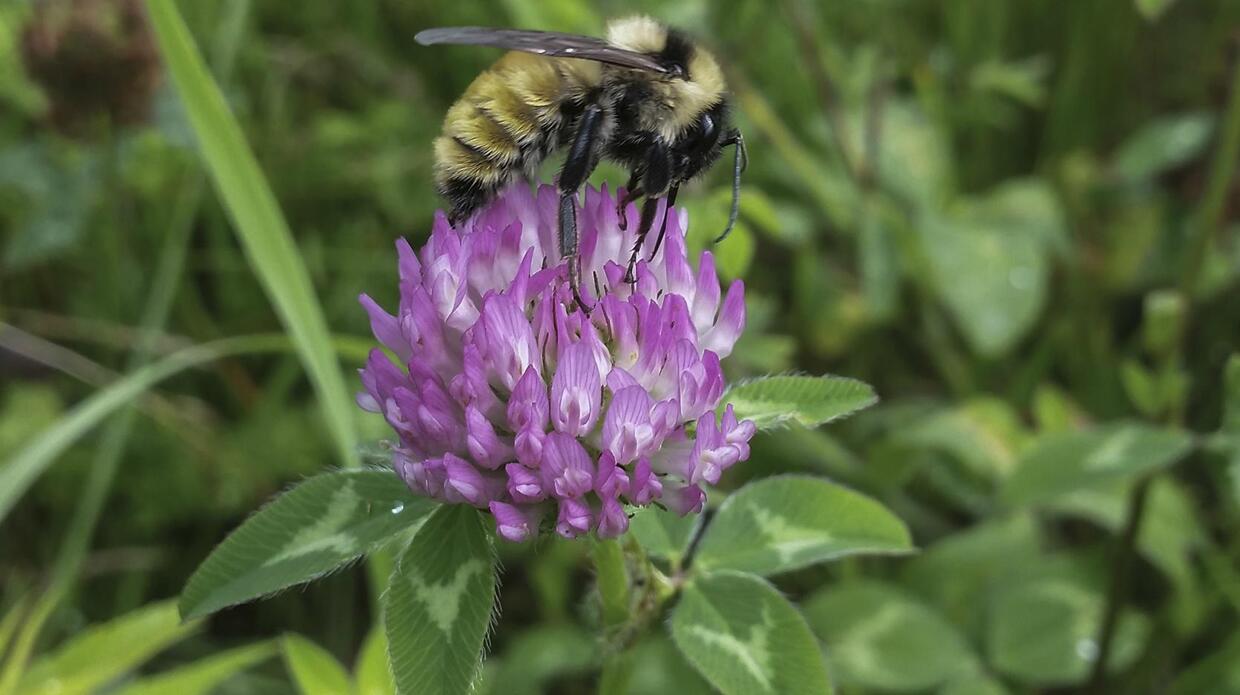Planting a bumblebee-friendly garden
All bumblebees need adequate sources of floral nectar and pollen throughout their life cycle in order to keep populations humming. As a group, bumblebees are considered foraging generalists because they can exploit flowers of many different plants. However, each species of bee has a unique set of physical, physiological, and life history characteristics, and flower preferences that must be considered when designing a bumblebee garden. Remember, a truly bumblebee-friendly garden is highly diverse. You need to include appropriate native plant matches for all kinds of bees.
Planting tips
- Remember diversity matters! Bee abundance is not the same as bee diversity; seeing large numbers of bees in your garden is only beneficial if it reflects a large number of different bee species.
- Avoid cultivars of native plants which don’t produce floral nectar. In most plants, you can check for nectar by removing the flower from the base and squeezing it—a bubble of clear liquid means it has nectar. For species with a nectar spur, you can check for nectar by placing a light source behind the flower.
- Avoid pesticide use, particularly those containing neonicotinoids.
- Always avoid exotic plants—they can have dramatic negative effects on bumblebee-native plant relationships and can contribute to bumblebee decline.
- Design plantings to ensure nectar and pollen are available for bumblebees throughout the entire growing season. Create potential nesting and overwintering sites. A dry, protected cavity containing straw, small clumps of moss, and/or dried grass located above or below ground is ideal.
Recommended native plants for bumblebees
Common plant names are provided in this list for easy reference, but always double check the species you purchase is native! Use the "GoBotany" tool to look up if a species is native.
- Aster (Eurybia macrophylla, Symphyotrichum laeve, Symphyotrichum novae-angliae)
- Bee balm (Monarda fistulosa)
- Blue flag iris (Iris versicolor)
- Boneset (Eupatorium perfoliatum)
- Carolina rose (Rosa carolina)
- Common buttonbush (Cephalanthus occidentalis)
- Dogbane (Apocynum androsaemifolium, Apocynum cannabinum)
- Goldenrod (Solidago flexicaulis, Solidago odora, Solidago rugosa)
- Joe-pye weed (Eutrochium maculatum)
- Meadowsweet (Spiraea alba, Spiraea tomentosa)
- Milkweed (Asclepias incarnata, Asclepias syriaca, Asclepias tuberosa)
- Old field toadflax (Nuttallanthus canadensis)
- Spiked lobelia (Lobelia spicata)
- St. John’s Wort (Hypericum canadense, Hypericum punctatum)
- Spotted touch-me-not (Impatiens capensis)
- Swamp thistle (Cirsium muticum)
- Pasture thistle (Cirsium pumilum)
- Turtlehead (Chelone glabra)
- Virginia rose (Rosa virginiana)
- Wild yellow indigo (Baptisia tinctoria)
- Wild raspberry (Rubus occidentalis)
